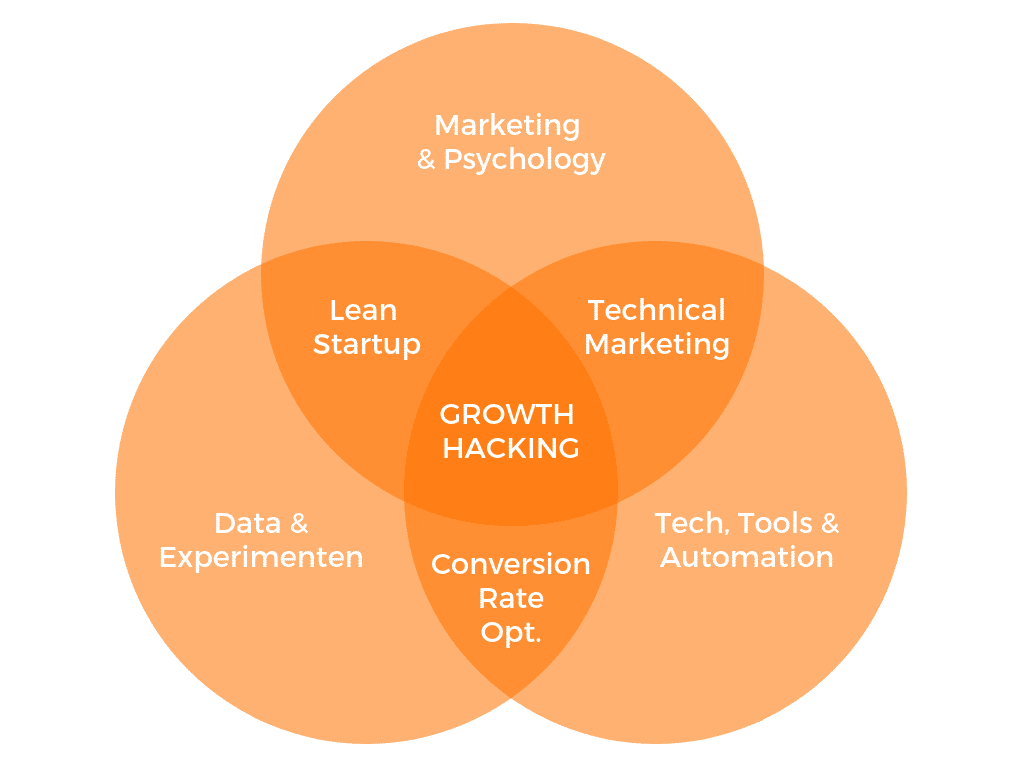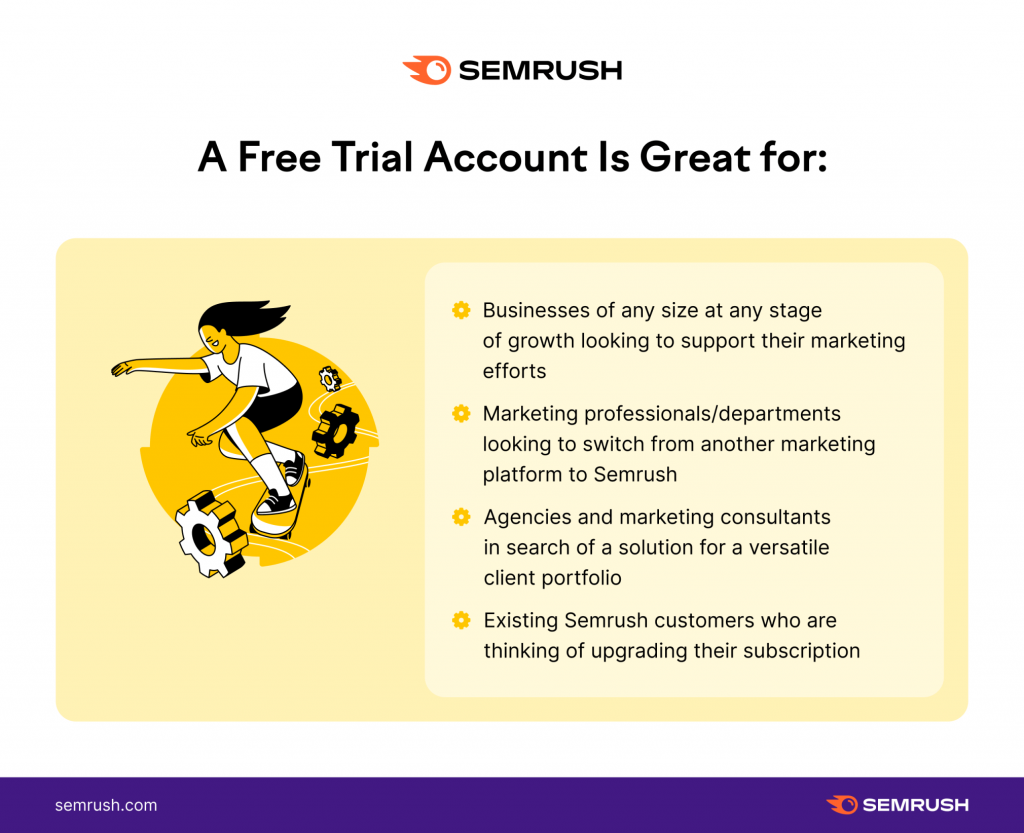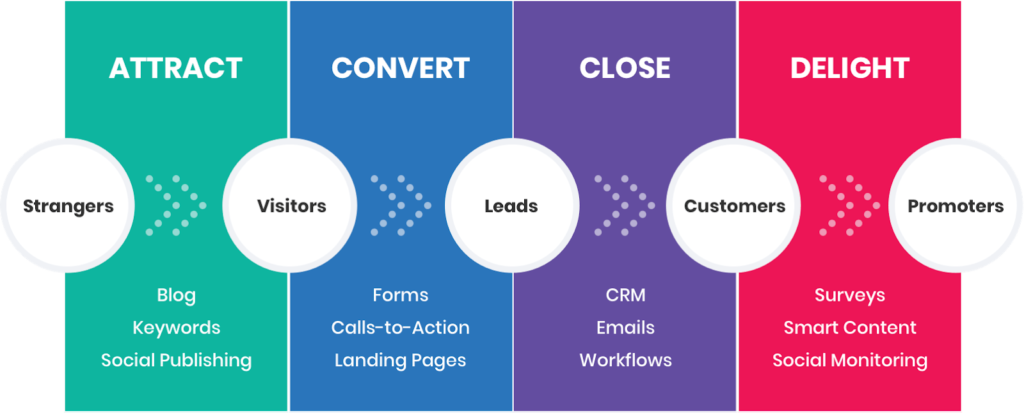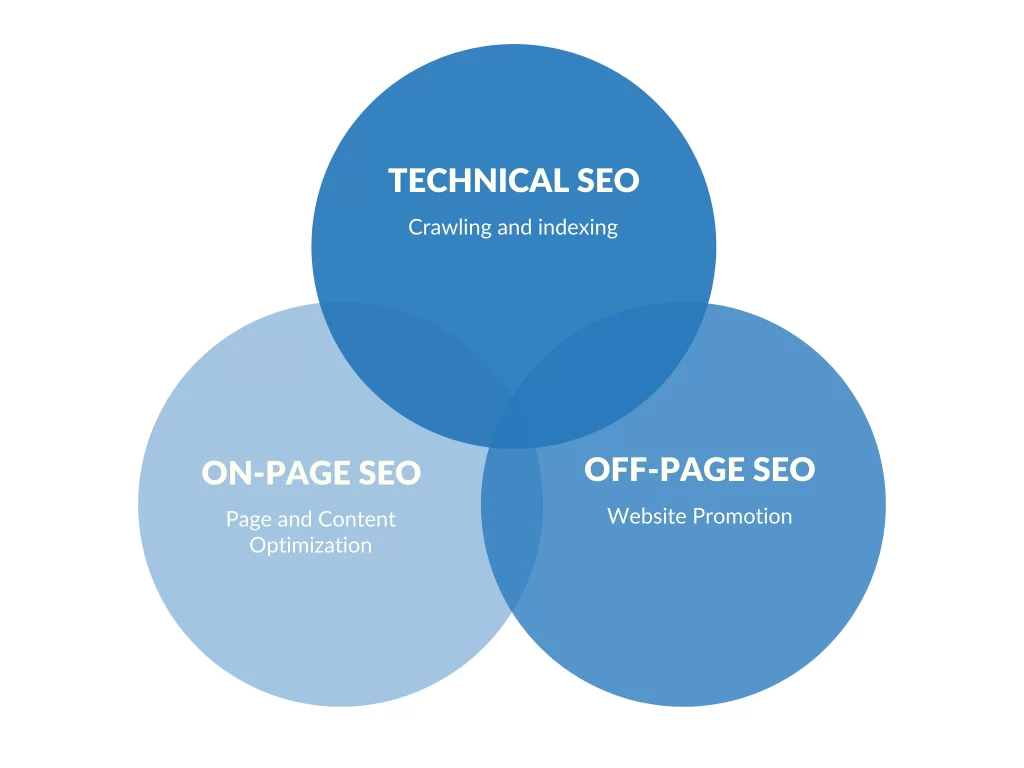7 Best Growth Marketing Strategies For B2B
The B2B world is changing, and the definitions of marketing have evolved to fit. This has led to new strategies as marketers adapt to their changing environment. Whether you're a B2B enterprise or a startup looking for new ways to grow your business, here are some of the best growth marketing strategies.
Table of Contents
What is Growth Marketing?

Growth marketing is a cross-functional strategy that looks at the entire customer lifecycle to maximise growth. It's not just about driving new leads but also acquiring and nurturing relationships with your customers.
Growth marketers are focused on building a customer base by creating an experience that makes them want to return again and again. This requires building brand awareness through content that resonates with your audience and delivers on their expectations when interacting with your brand.
Here is an example of some of the steps involved in implementing a tremendous B2B growth marketing strategy:
- Understand the customer journey.
- Establish measurable goals and objectives.
- Identify key performance indicators (KPIs) that align with those objectives.
- Create a measurement plan.
- Create content that will drive growth.
- Set up conversion tracking, so you know what's working and isn't.
- Measure the effectiveness of your marketing strategy.
- Repeat as necessary to achieve optimal results.
Create Thought Leadership Content

Thought leadership content is a great way to position yourself as an authority in your industry and build your brand. Once you've established yourself, you can use thought leadership content to attract new leads and increase your search engine rankings.
This type of content establishes you as an expert in your field. You might write a blog post or white paper that gives tips on improving something in the industry (like SEO, or PPC advertising, for example).
Then when someone searches for that topic, they may find you because their research led them there.
This tactic could also be used when it comes time for someone to buy from you! If they already know that they trust you and like the way that you do business (because of all the information available), then maybe it will make sense for them to go with what works best—namely, buying from companies who have already proven themselves worthy based on their other work.
If you are considering diving into some thought leadership content creation, here are some factors to think about;
1 – Platform
Where your content is posted is essential. Does your target audience hang out on LinkedIn? Or do they prefer to search on Google? Knowing these behaviours will help you decide where you should post your content. As we've mentioned, the aim here is to become super relevant, so ensuring that the content is in the right place is essential to this strategy.
2 – Tone and Language
Again, you will need to know your target audience to get this element right. Does your audience prefer basic explanations? Or are they on the lookout for in-depth, data-rich information? The answers to these types of questions will aid you in developing tone and language. For example, if your audience prefers to be communicated through informal, colloquial language, stay away from super technical and formal wording.
3 – Consistency
Like any content creation, thought leadership must be posted and updated regularly. This point is more crucial for thought leadership content as your target audience will come back looking for new content if previous pieces have been successful. To help make this easier, create a content calendar to stay on track.
Data-Driven Strategy Refinement

You can use data in many ways to refine your strategy. For example, if you're looking for ways to improve the conversion rate of your landing pages, then you might want to analyse all of your past A/B tests and see which one produced the highest conversions per visitor.
You can also use data to understand your competitors, how they're marketing themselves, how you can differentiate yourself from them, and help you understand how well a product is performing in the marketplace.
Your goal should be to collect information about your audience, competitors, and sales funnel. You can then use this information to test different marketing strategies and determine which ones work best for you. The most important thing to remember about data is that it's only valid if you use it correctly.
Here are some other elements for which data can be beneficial;
- You can understand what works and doesn't by using analytics to track your results.
- Use data to understand your customers and their purchasing processes.
- Use data to understand the competition, how they're marketing themselves, and how you can differentiate yourself from them.
- Use data to understand how well a product is performing in the marketplace.
Not to mention, knowing where to start with a data strategy can be daunting! If you are not sure what metrics or analytics to track, here are some easy ones to begin with;
1 – Website Traffic
Knowing your website traffic will help your organisation manage strategies more effectively. Analysing elements such as visitor location, unique visits, and popular landing pages will make all the difference when trying to get the most from your sight.
2 – Customer Acquisition Cost
This is a fundamental metric to look at when trying to convert new leads. This is all about the average cost of bringing on one new customer. It can be calculated by dividing the number of new clients you acquired by the amount you spent on marketing and sales.
3 – Return on Investment (ROI)
Tracking your return on investment is critical from a financial standpoint. It shows you the overall return on your marketing investment over a specific period.
Offer Free Trials and Discounts

Have you tried offering a free trial to your B2B customers? Organisations love to test products before diving in, so your audience will most likely love this option. This is the most obvious way to attract new customers, as it provides you with an opportunity to show off your product or service without requiring any money on the part of the customer.
It's also an excellent way for you to get some feedback from your users about what they like and dislike about your offering. Free trials encourage customers on the fence about your product or service to give it a try—and if they like what they see, they're more likely to convert into paying subscribers.
Most often, businesses offer a free trial for a week, and some businesses are more generous and give one month. Again, this depends on what your B2B audience best responds to. When you get the technical elements suitable, offering trial periods on subscriptions can lead to many conversions!
Another option is to give your customers a discount. Saving money anywhere possible is a big priority for most organisations, so a discount is always appreciated. Here are two different ways you can offer discounts on your products or services;
1 – Discount on First Purchase
Suppose you have been in business for a while. In that case, this option might be more appealing than offering discounts on products or services already available from another vendor in your industry.
For example, if an accountant offers one year of tax preparation at no cost but charges £500 annually after that point, then she may get more clients by lowering her price point by £500 right away instead of waiting until later in their relationship (when they're already paying her).
2 – Bundle Discount Offers
You can offer bundles of products at discounted prices—for example, offering all three years' worth of annual reports at once rather than charging them each year separately—and then offer further discounts based on how many bundles are purchased together (in other words: buy two annual reports together and save £100!).
Paid Advertising

Paid advertising is a great way to grow your business, but knowing where to start and what to do can be difficult. There are many types of paid advertising, including social media ads, sponsored content, retargeting, and Google UAC.
Each type has its unique benefits and drawbacks; you'll want to consider the goals of your campaign when deciding which paid marketing strategy will work best for you.
This advertising method is a great way to get your message in front of customers and get them to take action. However, it's crucial not to overspend on advertising. If you're spending more than 20% of your budget on advertising, then you should reevaluate how much money is being spent and what percentage goes directly toward improving customer experience.
It's always worth considering if you can improve other business areas before increasing spending.
1 – Pay-Per-Click (PPC) Ads
Pay-per-click (PPC) ads are a great way to generate traffic, test keywords and products, and test ads. The most significant benefit of PPC is that it's easy to set up. You don't need special coding knowledge or resources to start this type of advertising. You need a Google AdWords account and then follow the simple instructions. You'll be on your way within minutes!
App marketers may promote their mobile apps to a target group using Google app campaigns or UAC. This strategy is another excellent method to get your app in front of a targeted audience aimed at meeting specific goals.
2 – Display Advertising
Display advertising is online advertising that uses banner ads, rich media ads, and other types of ads that appear on a web page. It's used to show your ads to a large audience.
You can use display advertising to promote your products and services to your B2B audience by creating ads for them on the internet. You can also use it to increase brand awareness or generate leads for your business.
Display advertising has three main objectives: branding, lead generation and direct response (sales). It can be used at virtually any stage of the marketing funnel, from awareness through to conversion.
3 – Mobile Advertising
Mobile advertising is an excellent option for companies with a large mobile audience. Mobile ads are cheaper, more effective, and more targeted than desktop ads. They can be measured by how often your ad was seen or clicked on. Mobile ads have higher click-through rates (CTR) than desktop ads, meaning people are likelier to click on them!
Paid advertising is one of the best ways to add additional traffic to your site. Paid advertising allows you to target your audience and learn more about them. It can help you test out new things for your website or learn more about what kinds of content people are interested in.
You can also run experiments with different ad types, such as text ads versus video ads, which will help you figure out what works best for your business!
Retention Marketing

When marketing your business, you want to ensure that you're spending as much time and energy on the customers who already love your product or service as you try to acquire new ones. To do this effectively, we need to understand retention marketing and why it's crucial for your business.
Retention marketing is all about keeping your customer happy. If you're not doing that right now, it's time to start: retention marketing helps you reward customers for their loyalty and ensures they're satisfied with your product or service. And as a result of these things, customer retention increases.
You can reduce churn using retention marketing strategies in a B2B environment. When it comes to B2B companies specifically, you have to look at churn from two different perspectives: the business perspective and the individual employee perspective.
For example, let's say you run an eCommerce company selling office supplies online (like Staples). Your customers are businesses who buy pens and printer ink from your website regularly— this makes up 80% of your revenue stream!
This means there's more risk involved with losing one of these big-spending clients than if they were just regular consumers buying something like jeans off Amazon Prime instead; if one stops buying from you because they had terrible experiences with their last purchase order, then this could impact future sales negatively as well, so everyone working here must understand how vital retaining current customers is!
1 – Look at Purchase Behaviour
You will first want to analyse their purchase behaviour, look at what products they purchased when they made those purchases, and how much they spent. Once you've done this for a few customers, it will become easier for you to get an idea of your most valuable customers.
You will also want to look at what other kinds of behaviours these customers exhibit with your products. For example, if a customer buys one item every month but then stops buying anything from you for six months or more, then they may be telling you that they're no longer interested in your product or service and it's time for them to move on to another company that offers something similar.
2 – Predict Future Customer Behaviour
The data you have about your customers can help you predict future customer behaviour. Identifying patterns in the data can help you identify who is likely to buy from you, who's inactive and unlikely to buy, and who might be ready for purchase but isn't quite there yet.
With this information, you can target specific groups of people within your customer base with ads or emails. You can also use these insights to target customers with specific offers they might find valuable or relevant.
One of the best ways to do this is by implementing retention marketing strategies. As a result, your business can reduce churn and provide better services for your customers. And you will also save money!
Inbound Marketing

Inbound marketing is a customer-centric approach focusing on attracting customers by creating high-quality content. It heavily emphasises creating useful and valuable resources for your target audience to build brand awareness, earn trust, and generate leads.
Inbound marketing is a long-term strategy that can help you build customer trust and loyalty over time. Inbound helps you create value for your customers, so they're more likely to return when they need additional products or services from your business in the future.
Plus, as your brand establishes itself as an authority in its industry (i.e., Google ranks highly), you'll gain even more credibility with prospects who may have never heard of you before!
Here are some other elements of inbound marketing to consider;
1 – Lead Nurturing
Lead nurturing is building a relationship with a prospect over time. It's a simple way to build trust and loyalty, which can help you create lasting relationships with your audience.
You probably know exactly what we mean if you have ever shopped at an outdoor store. You start by browsing the website. Then, maybe you browse some more, but this time you sign up for their email list so that they can send out exclusive deals and news about new products.
Once you do that, they'll send periodic emails every once in a while about new products on sale or sales events happening at certain stores in town—and each time one of these emails comes through your inbox (or wherever else it might be listed), it feels like getting invited to an exclusive party!
You feel like part of this exclusive club, even though all it took was signing up for their email list once upon a time months ago when no one else knew about it yet except them; now everyone knows!
2 – Buyer Personas
Buyer personas are fictional characters that represent your ideal customer. They're based on data about your target audience and can help you create content that resonates with people in different stages of the buying cycle.
They aren't carbon copies of real customers but synthesised versions of several real people with common traits. For example, let's say you sell office furniture.
Your buyer persona might be an executive assistant named Lisa who spends her days at a desk while wearing high heels and running around between meetings or conference calls.
She needs an ergonomic chair but would prefer something stylish so she doesn't look like a slouch when she sits at her desk every morning (yes, we know—this is entirely made up).
3 – Analytics
As previously mentioned, analytics will help you understand your audience better. You can then use that information to tailor your strategy and content to meet their needs.
You can also use analytics to decide how to improve your website, inbound marketing campaigns, and overall strategy for the future.
Search Engine Optimisation

Search engine optimisation (SEO) is optimising your website so that it appears in the top search results when someone searches for your products or services and should be included in your growth marketing techniques.
If you want to increase traffic to a specific landing page, SEO can be an effective way to drive qualified leads from organic search traffic. For example, suppose you run an eCommerce store selling running shoes and have a landing page dedicated to running shoe reviews.
In that case, you'll want to optimise this page for keywords related to running shoes and running shoe reviews. This will help improve its ranking on Google when people search those terms.
SEO is a long-term strategy. You'll need to consistently update your website with content relevant to what people are searching for to maintain an edge over competitors. However, if you do SEO correctly, the time and money spent on SEO will pay off big time.
Conclusion
Growth marketing strategies are poised to be the future of business growth strategies (and they're already here).
Digital transformation isn't just about adopting new technologies; it means rethinking your entire approach for success in today's marketplace—not just with your customers but also with employees and shareholders. Growth marketing is how to grow your company efficiently and profitably—and if you don't have one yet, then now's the time!
This list of growth marketing strategies will help you keep up with these changes and stay ahead of your competition. Whether you're just starting or an experienced marketer, these ideas will get you thinking about reaching new customers in a way that works best for your business.
Don't be afraid to dive into the deep end by trying out strategies that seem alien to you. You may learn that these strategies are best for your organisation!
Author Bio: My name is Linda Hinds, and I am a Content Director at Launchpad. I graduated from Emory University in 2015 with a first-class Marketing and Communications degree, where I fostered my love for providing value to customers. I completed various internships in the marketing analytics space throughout my time studying in various sectors, including finance, customer services and media. With extensive experience in the digital marketing space, it made sense to cross my passion for helping clients with growth marketing. When I am not writing articles and handling client queries, I like to drink good coffee, do hot yoga and travel to new and exciting places. As well as being a decent marketer, I also classify myself as a great cook!
